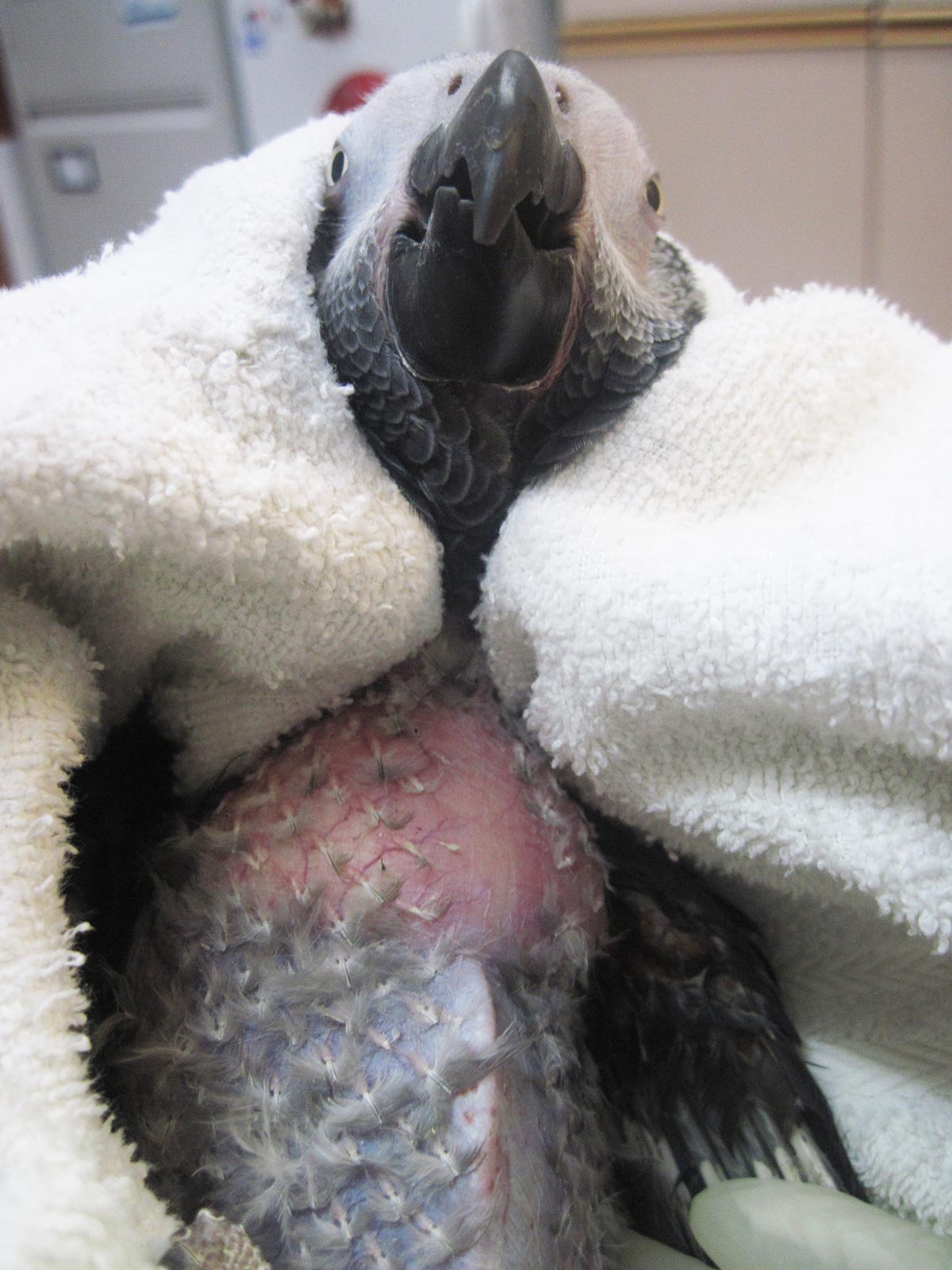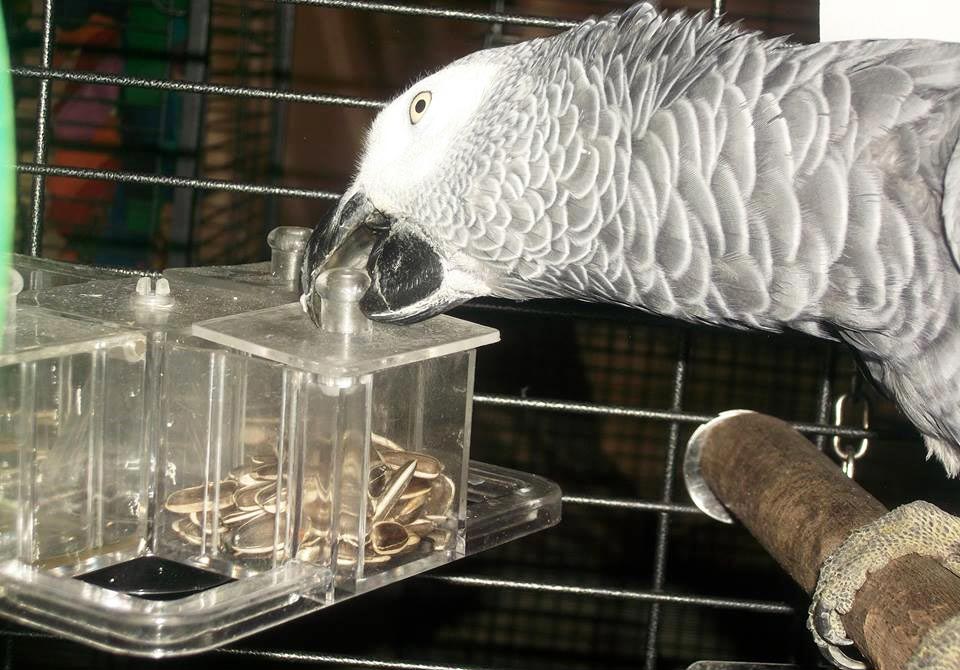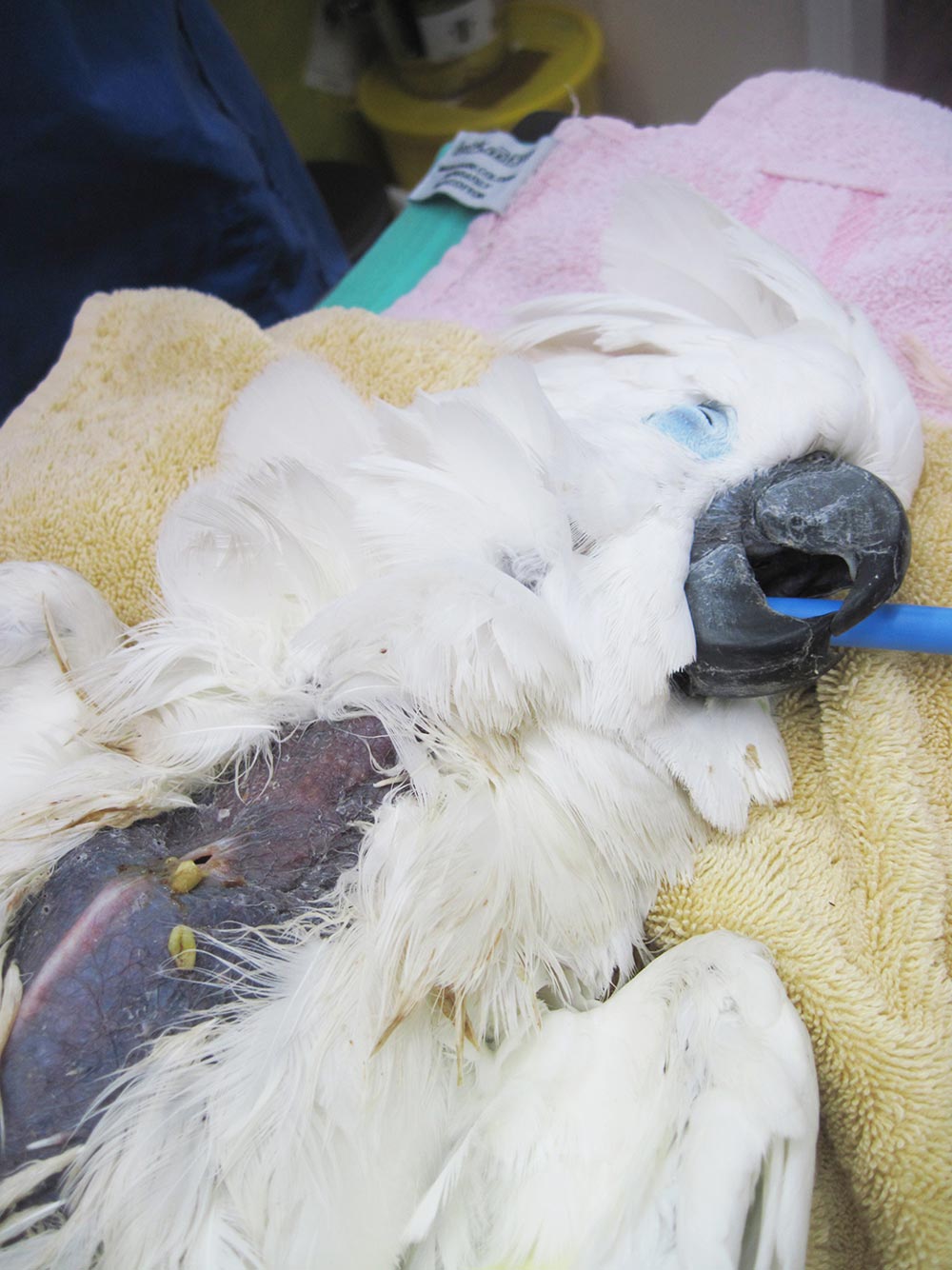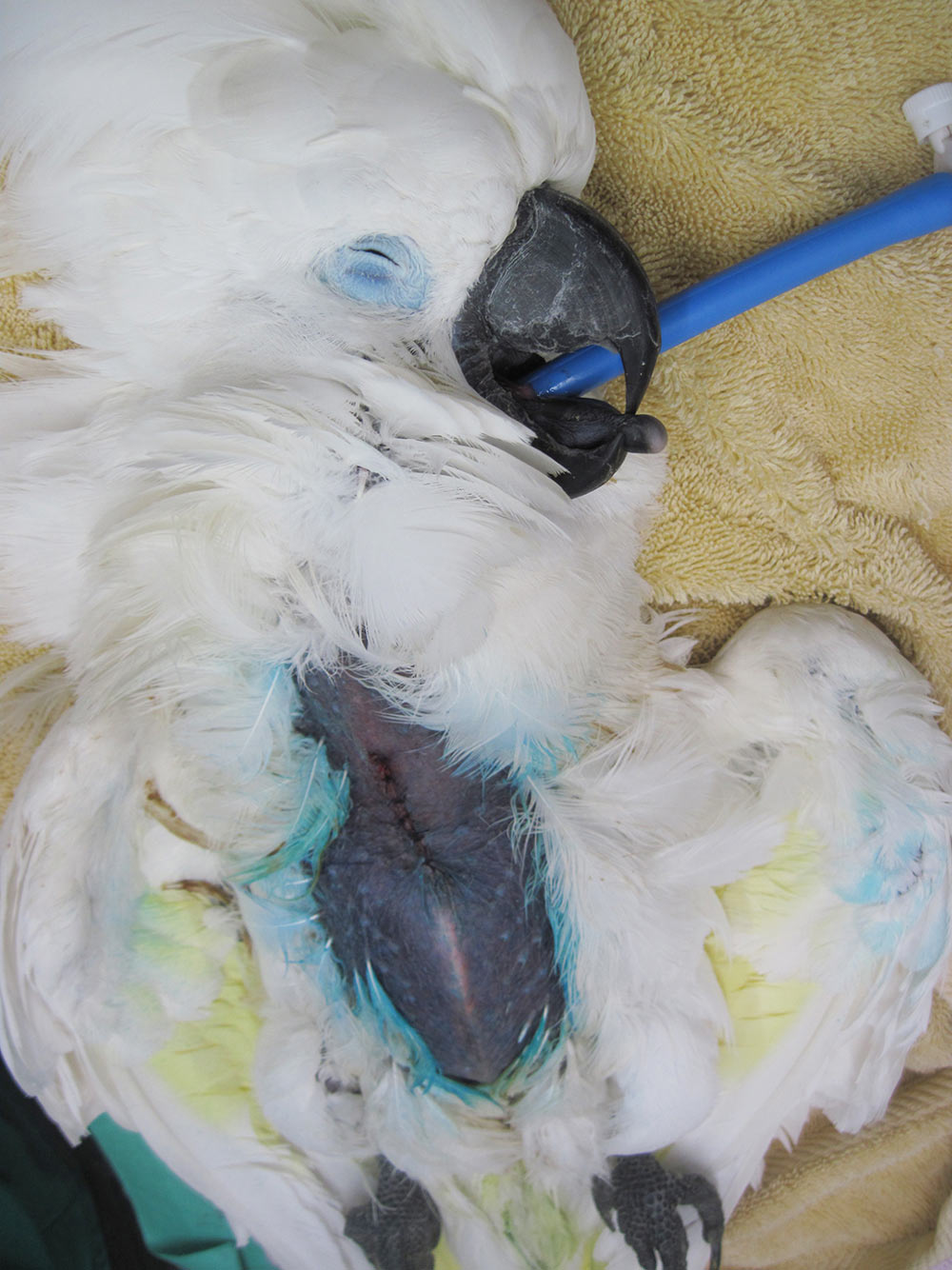8 Dec 2016
Care of psittacines: advice on basic principles part 1
Clare Jones, in the first of a two-part article, familiarises VNs with parrot handling, diet, environment and illness.

Psittacines (birds of the parrot family) are an increasingly popular pet and, therefore, becoming more commonly seen in practice.
Psittacines (birds of the parrot family) are an increasingly popular pet and, therefore, becoming more commonly seen in practice. Due to this, nurses are becoming more relied on to handle parrots for health checks and routine nail clips, so should feel confident and comfortable to do so. With this knowledge of anatomical landmarks and differences comes an understanding of how to safely handle a parrot, minimising risk to the bird and holder.
A variety of environmental problems can contribute to illness and a VN should be able to recognise these problems, as well as advising the client of gold standard care. These include, but are not limited to, cage cleanliness, zinc-free toys, environmental enrichment and a correct, safe diet. If any of these areas are insufficient or lacking, serious illness may occur.
Common signs of illness should be easily recognised to ensure the parrot has any required treatment, while the client should be educated on how to improve on certain areas. This article will aim to help nurses in their knowledge of parrots and the common problems seen.
Keywords: psittacine, nursing, diet, enrichment, illness
In this article, the author aims to offer guidance to VNs who feel a sense of dread when a parrot is brought into their practice. Having worked in an exotic practice for six years – including training and qualifying – she believes she can relate to that feeling perfectly.
The article will look at parrot handling, diet, environmental issues and common symptoms of illness. While only a vet is qualified to make a diagnosis, a client is far more likely to tell a VN a few more truths, which is often the case with diet or signs of illness.
Handling
So, first – holding the bird. Before you even approach the cage, make sure all windows and doors are closed. Then, a towel – your ideal tool, here – should be used, based on the size of the parrot.
Gloves, however, should not be used, as they can reduce your ability to safely hold or assess the amount of pressure being placed on the parrot’s body, as well as increasing chances of escape.
As a basic guideline, use a thin tea towel or flannel for smaller birds (such as budgies or cockatiels), a hand towel for medium-sized birds (such as African grey parrots or cockatoos) and a large towel for bigger birds (such as macaws; Figure 1).

It took the author a fair amount of time and courage to handle a parrot, and it can be daunting trying to catch a flapping, squawking animal with a beak that can cause some serious damage.
So, taking a deep breath, first remove any toys and perches from the cage, then catch the parrot carefully around the body with a towel, making sure not to damage the wings.
If any damage is to be done to the holder, it will be caused by the beak, so just be cautious and use the towel for protection. The towel also keeps the parrot (and more importantly, its wings) contained, and minimises the chance of escape.
Avoid placing any pressure on the body of the parrot – doing this restricts the muscles and outward movement of the ribcage and keel, which have the job of allowing the air sacs to inflate and deflate. This means you’ll be preventing the passage of oxygen, which can obviously be fatal (Atkinson et al, 2011).
Grip firmly, but do not strangle around the neck, and place your thumb and forefinger under the mandible, as this gives control over the movement of the head and beak (Froehlich and Forbes, 2015).
Birds have a very different anatomy to mammals. While we have lungs that inflate and deflate when we breathe – allowing the flow of oxygen through a single respiratory cycle – birds have rigid lungs and no diaphragm. So, when they breathe, not only is oxygen passed through the lungs for the exchange of gases, but a second respiratory cycle is performed to allow air to flow to a set of nine air sacs around the body (Aspinall and Cappello, 2009).
These air sacs – as well as pneumatic bones – are incredibly important for a bird’s ability to fly and they act as bellows, pushing air through the rigid lung in a single direction. Aspinall and Cappello (2009) also noted the respiratory system of a bird was thought to be up to 10 times more efficient than other animals.
When handling a bird, it is vital to keep stress levels to a minimum. This is essential when dealing with much smaller birds, which – especially if unwell – have a higher risk of going into cardiac arrest.
Always monitor a parrot you are holding – is it becoming tachypnoeic or breathing heavily? Is it becoming tachycardic or bradycardic? Has it become more limp in your grasp or is it trying to move out of your grip? Are its eyes open and responsive, or are they closed?
Having a supply of oxygen ready for immediate use, as well as a circuit and suitable mask, is advisable.
Cage cleanliness and size
When an ill parrot is brought in (the symptoms of which will be looked at later in this article), talking to the owner can be a good way to assess potential problems. In some cases, illness can occur due to an environmental problem.
One such problem – which, unbelievably, is often not viewed as an issue by many owners – is an unliveable, dirty cage.
The author has, on a handful of occasions, spent hours scrubbing and cleaning the most horrendously filthy cages, to the point where an owner does not recognise it as his or her own.
The bars are encrusted in faeces, old and mouldy food is stuck to the base of the cage, and feathers and feather dust cling to everything.
Parrots make a lot of mess every day, so their living environment should be cleaned daily, with a deep clean at least once a week.
Most disinfectants are toxic to parrots, so an appropriate disinfectant safe for the birds that provides high-level disinfection against bacteria, fungi and most viruses is required.
If a cage is not regularly cleaned, a risk exists of the parrot developing respiratory problems due to the inhalation of fungal and bacterial spores, which spread rapidly around the body due to the highly efficient nature of its respiratory system. A VN should, therefore, have a discussion with owners about the importance of cleanliness and the health implications from not staying on top of it.
The use of newspaper on the base of the cage is advocated as this can be simply thrown away – this means the cage can then be easily cleaned on a daily basis.
Another consideration with cages is size. In the author’s opinion, a cage should be as big as an owner can have it and appropriate to the pet’s size.
She is “often horrified” when small travelling cages brought into practice are the cramped cages birds live in 24 hours a day. At a minimum, the bird must be able to open its wings out fully and turn 360° without touching the sides (Baker, 2012). Ideally, an outdoor aviary should be provided for flight.
Stanford (2002) noted zinc poisoning can occur from cheaper cages made of galvanised metal. Clients should also be made aware a cage should be not only a suitable size, but also made of safe materials.
The bars of the cage, meanwhile, should be horizontal, not vertical, because parrots or psittacines are zygodactyl, meaning they have two toes pointing forward and two pointing backwards, giving them the ability to grip and climb, which they love doing.
A further consideration with cages are perches. Plastic perches are okay for short-term hospitalisation, but not suitable for long-term everyday living. This can result in pressure sores on feet, while being overweight can also contribute.
Ideally, non-toxic natural fruit tree branches – from apple trees, for example – should be used and regularly changed (Shingleton and Cottingham, 2011).
The change in diameter along the branch alters the grip of the feet, files down the nails and changes the distribution of weight frequently, preventing pressure points on isolated areas. It provides a good source of enrichment, too, as parrots take great pleasure in destroying and shredding them.
Diet
Diet is a major cause for concern – often down to owners not having researched what an appropriate diet should be for that particular species.
Parrots are highly intelligent animals – they interact with their owners and some have the ability to talk. Therefore, as owners tend to treat them more like humans, they are likely to feed scraps and bits of unsuitable human foods to their pet.
The first red flag when a parrot is brought into the practice is the observation of an abundance of sunflower seeds in the bowl (Figure 2).

Most people are aware sunflower seeds make sunflower oil, therefore this is a good indication they are full of fat, and, while a good source of copper and vitamins E and B1, sunflower seed-only diets are not recommended for psittacines as the seeds are not only too high in fat, but also too low in essential amino acids and other vitamins and minerals.
Birds on seed-only diets commonly, therefore, suffer from obesity and deficiencies in calcium and vitamin A, which can lead to death (Shingleton and Cottingham, 2011).
So, why do owners feed their pets these seeds? “Because Polly loves them and they are the only thing she will eat”, apparently.
Parrots have the mental capacity of an intelligent five-year-old child – they are not stupid. In cases of a poor diet, the author gives this scenario to a client – if you were a child and offered a burger, chips and ketchup everyday (the sunflower seeds) or a healthy salad (the good quality seed, fruit and vegetables), which do you think you would choose?
I don’t think I know many children who would be able to resist the fatty, salty, oily burger and chips, which, while incredibly delicious, is definitely bad for you – especially when it is eaten every day and not in moderation. Parrots are the same – they are selective feeders and will always go for the tastier item, even if this is not good for them, so bear this in mind. One or two sunflower seeds is okay as a treat, but not as part of a balanced diet.
That’s more like it
So what should parrots be eating? Well, this depends on the species of parrot, what they would normally eat in the wild and what is on offer in the shops for captive birds. In all cases of seed, it is of extreme importance a good-quality one is offered, and by this the author means one fit for human consumption
If not, it means the seed is likely to be of poor quality and can be commonly found in pet stores. The problem with this seed is, as it is not fit for human consumption, it is “bad”, often full of fungal and bacterial spores, and lacking in nutrients.
This seed can also go on to cause serious fungal and respiratory diseases in birds.
You, the VN, should talk to the client about diet and find out what he or she is feeding – the author has often found them to be far more truthful than other owners of different species about what they feed, and this can be incredibly useful and enlightening (as well as shocking, as parrots appear to be commonly fed a range of human food).
The author has also been witness to some horrendous injuries caused by human food. The worst was a young cockatoo that had been allowed to drink hot cups of tea, as well as being fed human food, such as hot chips, regularly.
This resulted in a hole that had burned through its crop (Figure 3).

This meant the cockatoo was unable to eat properly, as all seed went down the oesophagus, into the crop and out of the hole. Surgical intervention was therefore required (Figure 4).

A gold standard parrot food would have a variety of bags of different-sized kibbles available for a variety of species and parrot sizes, designed to prevent selective feeding.
This food can usually be refrigerated and kept for up to six months as well. However, as it doesn’t look particularly appetising, it can be a difficult task trying to convert birds to this diet.
Top tips for conversion include eating the kibble in front of the parrot – remembering a good quality food is fit for human consumption – as they like to mimic those they are watching.
Placing a mirror on the base of the cage and placing food on top of it can also encourage a bird to eat as they believe they are watching another bird eating the food. Introduce it gradually into their own diet and reduce their normal diet.
Offering pulses, fruits and vegetables is also advisable, while research of the breed will indicate the types of foods they would eat in the wild, as well as the foods not to give. Supplements such as calcium, and mineral and vitamin support, is also a good idea.
